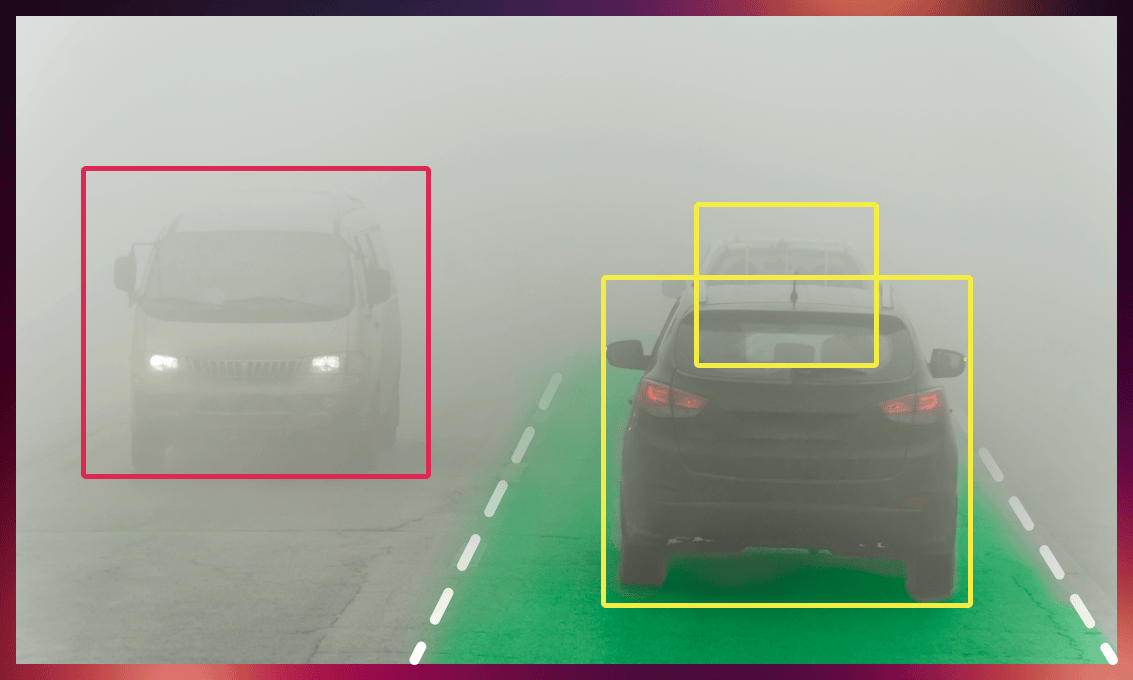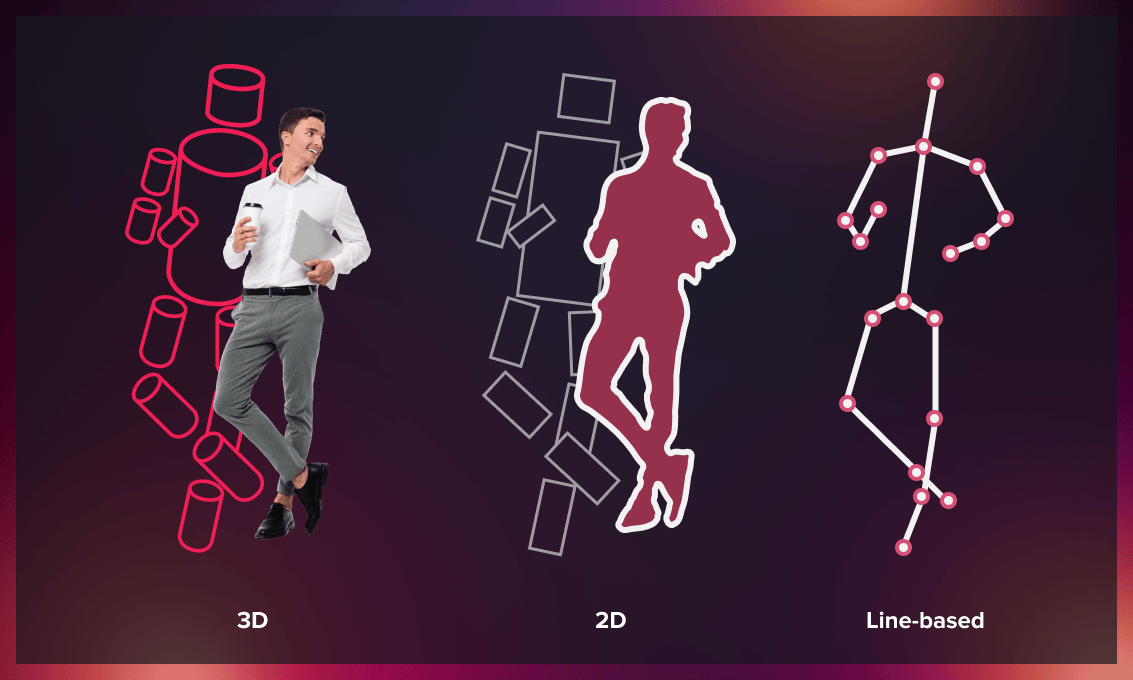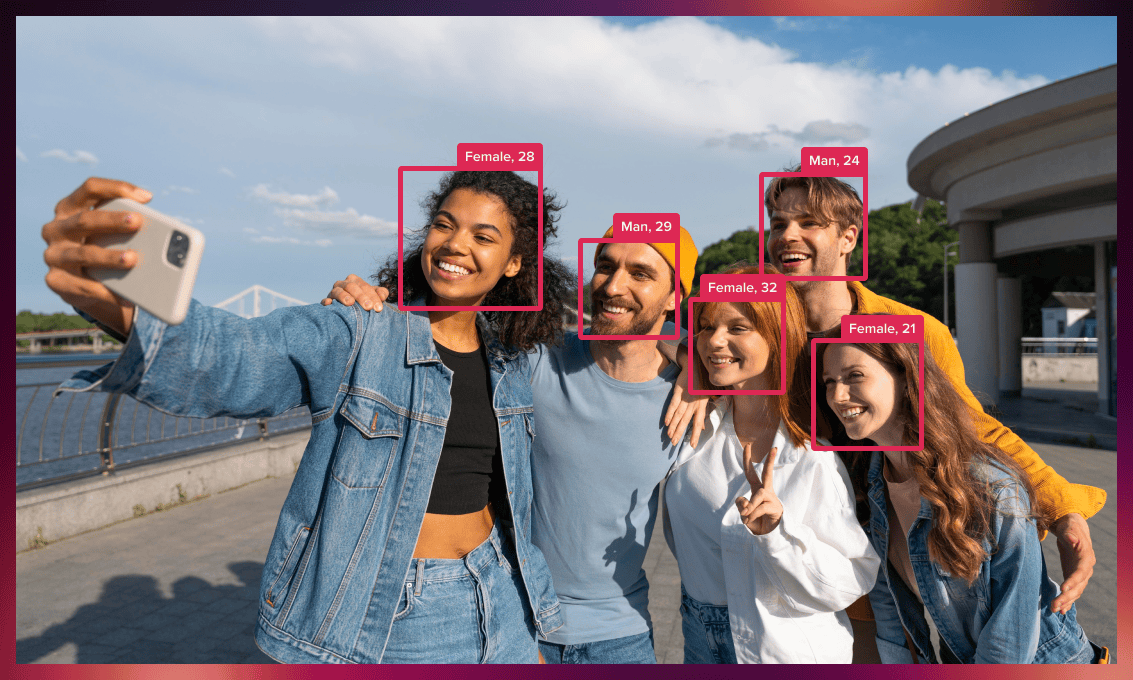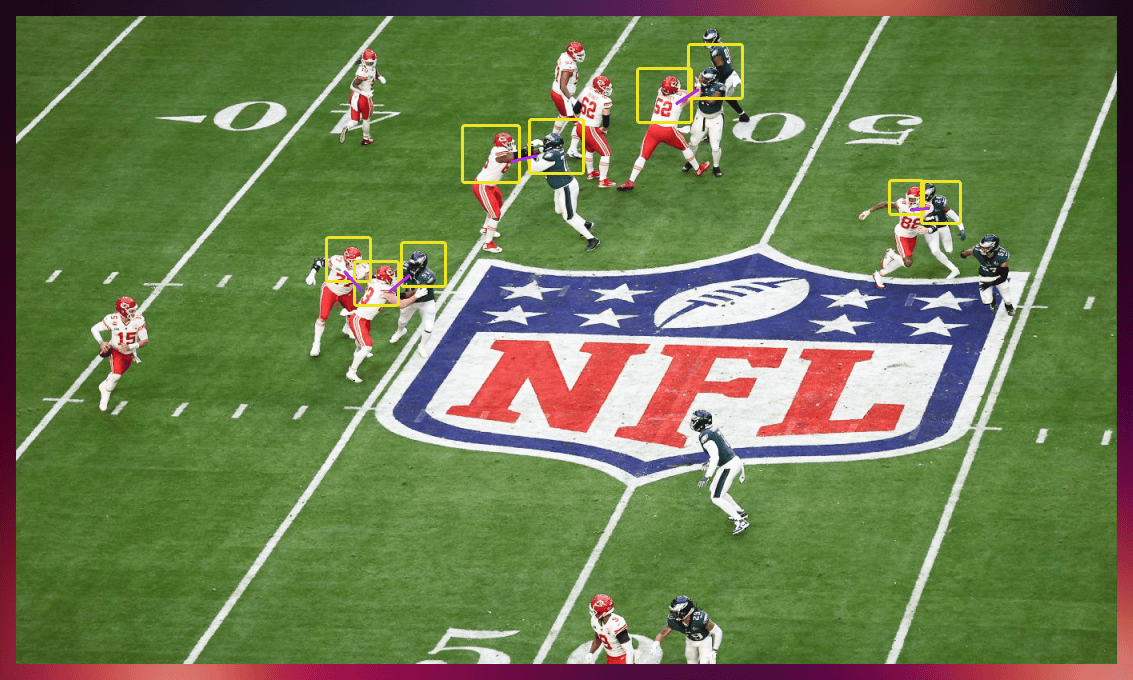In this article, we give a comprehensive overview of AI project ideas, from beginner-friendly to more advanced challenges. By working on these AI projects, you can gain valuable skills in machine learning research and development, build a portfolio, and make your contribution to the fast-developing field of artificial intelligence.
One of the great things about AI is that it is a highly interdisciplinary field. There is no one-size-fits-all approach to AI projects. No matter which background you have, you can find a niche in the field.
How to pick an AI project?
Here’s the best way to choose a fun ML project that fits your learning objectives.
1. Find stuff that interests you.
Create two lists. In the first, write down your main interests. In the second, cool machine learning projects, such as the ones we mention below. At the intersection of the two, you’ll find AI projects that are both fun to work on and useful to implement.
2. Check if you have data.
With several possible projects on hand, check the availability of datasets. For example, you can use this collection of free datasets.
3. Ready, steady, go!
Finally, select a project idea that sparks your interest, and showcase your skills by developing a solution that includes a combination of machine learning methods. Aim to create an impressive project that you will be proud to share with others.
With that being said, let’s now delve into our list of artificial intelligence project ideas.
Top ML projects for beginners
Handwritten digit recognition
Handwritten digit recognition is converting handwritten information (papers, signatures, pictures, etc.) into output that can be read by a machine. The task can be challenging because of the diverse range of writing styles and the quality of source material.
A handwritten recognition app captures an image or scan and then uses pattern recognition algorithms to identify the characters and words in the text to convert them into a machine-readable format. The outcome is a digital copy of the handwritten text that can be further processed or analyzed. The app can be used for numerous purposes, from digitizing old documents to facilitating communication with people with typing difficulties.
For this project, you can use one of the most popular handwritten digit databases, MNIST, which includes 70,000 images, or the HASYv2 dataset, which contains 168,000 images organized into 369 different classes.
To train the model, you can use any of the following:
The video below provides a step-by-step neural network solution using Python and TensorFlow.
Price comparison with ML
One idea for an AI project for price comparison could be to develop a machine learning model to analyze and compare prices across different e-commerce websites or platforms.
A price comparison ML app collects data about products and their prices from various sources, then extracts relevant features and uses ML algorithms to train a model on the collected data. The trained model compares product prices across multiple sources and predicts the expected prices of similar products. This project is particularly valuable for marketers who are working on new product launches, such as vehicle models. They need to conduct complex multi-parametric analysis to set prices and establish a strong presence in the market.
Algorithms commonly used for price comparison:
- Regression trees
- Support vector machines
- k-Nearest neighbors
- Vector autoregression (VAR)
- Sequential and long short-term memory (LSTM
Lane line detection for AI vehicle assistants
Lane line detection is essential for many advanced driver assistance systems (ADAS). Determining the vehicle’s position relative to the road is crucial to the control system’s decision-making process, especially in low visibility conditions like fog. When this system operates in challenging weather conditions, the importance of accurate lane line detection increases significantly.

Road lane line detection using computer vision
To develop a road lane line detection system, one approach is to use computer vision techniques to process images captured by a camera mounted on a vehicle. One common method is using convolutional neural networks (CNN).
To achieve accurate lane line detection, you need a large dataset of annotated road photos. They can be collected using a camera on a vehicle or from existing public datasets like this one. It’s advisable to combine normal roads images with the images of roads in special conditions , such as the rainy road DB or foggy road images.
If you need more detailed instructions along with code examples, you can refer to this Kaggle step-by-step guide.
Recommendation system
You can create a personalized recommendation system to help customers find what they need, such as product recommendations, workout suggestions, or similar places to ones they loved, etc.
By analyzing a customer’s browsing history, behavior, and implicit data, the recommendation system has the potential to increase website traffic, generate leads, attract more loyal customers, and improve overall profitability of any product or service. Including such a project in your personalized resume or CV shows business owners that hiring you as an AI specialist is a smart investment that will pay off quickly.
Algorithms used for recommendation engines
Depending on the type of recommender system you want to build, you can use different algorithms. For collaborative systems that involve user-based interactions or content-based systems that require analyzing similarities between items, you can use algorithms such as random forest, MAE, kNN or Bayesian inference.
Recommendation systems are widely used in e-commerce and entertainment platforms like Amazon, eBay, Netflix, and YouTube. If you’re interested in building a career in AI, knowledge in this field is highly sought after in various job roles.
Popular AI projects of medium complexity
Traffic prediction
Want to help thousands of drivers avoid traffic jams? You can construct a deep learning model in Python for predicting traffic congestion.
One option for getting the necessary data is using publicly available Waze datasets which contain details on various types of traffic events, including the date, time, different weather conditions, and location.
A traffic prediction app collects data from various sources, such as cameras, GPS devices, and weather reports. The collected data is cleaned, formatted, and normalized, and relevant features such as traffic volume, speed, and road conditions are extracted. An ML model is trained on the data to predict the expected traffic conditions in a particular area or route, using patterns and relationships learned during training. The app’s output provides users with real-time and forecasted traffic conditions, helping them plan their route and travel time.
Algorithms and NNs used for traffic prediction
Here are some real-life examples of how the models and techniques that can be used:
- Traffic forecasting with Keras
- Traffic prediction repos on GitHub
- Example of prediction with a N model
It’s valuable to have such a case in your portfolio, as the model could be developed and integrated into traffic management systems to optimize traffic flow and routing, improving overall transportation efficiency.
Human pose estimation (HPE) with ML
Human pose estimation involves identifying the spatial locations of body joints like elbows, knees, and shoulders in an image or video. This task is crucial in computer vision, as it has many practical applications, including action recognition, gait analysis, and human-computer interaction.
Watch the video below to learn about the various business applications of this technology:
One of the challenging aspects of human pose recognition is estimating the 3D pose of multiple people in real-time using only monocular camera inputs. This is challenging as the camera’s view may be obstructed by other people or objects in the scene, and people may move rapidly and unpredictably.

One approach to solving this problem is using a deep neural network architecture to detect and track human joints and infer their corresponding joint locations. The neural network is trained using large datasets of images to accurately estimate the 3D pose from 2D image inputs.
Datasets to use: OpenPose, MPII, 3DPW.
Practical applications of human pose identifiers
Once the system is trained and deployed, it can have various applications.
- For example, in sports analytics, the system can analyze the performance of athletes in real-time and provide feedback to coaches and athletes, as described in this video by Vanderbilt University.
- In robot-robot and human-robot collaboration, it can enable machines to interact with each other and with humans in a more natural and intuitive way.
- In virtual reality, it allows for more realistic and immersive experiences by accurately tracking the movements of the user’s body.
Facial emotion recognition
What about developing an application that can recognize core human emotions such as happiness, sadness, anger, fear, surprise, disgust, etc.? Up to a challenge? Try to prove that it is possible to build such software with the help of convolutional neural networks (CNN) and deep learning using the FER2013 dataset.
Potential real-world applications include bots that can better interact with humans and offer the required support. Thus, they can help blind individuals, children with autism, psychologists, and others. They can also monitor drivers’ signs of inattention due to tiredness to keep them safe.
Blindness detection
In this case, you can develop a machine learning model for disease diagnosis, specifically for diabetic retinopathy detection. With its vast collection of images, the model can aid in automating the process of identifying diabetic retinopathy and potentially detecting other eye diseases, such as glaucoma and macular degeneration.
To accomplish this, you can utilize two pre-trained models, Resnet101 and Resnet152. Introduce transfer learning to the APTOS 2019 Blindness Detection dataset, which includes 3,662 retinal images, to achieve valuable results with a limited number of images depicting the disease at different stages.
Sign language recognition app
Communicating with individuals who have hearing disabilities can be difficult, and not everyone knows sign language. You can create a sign language recognition app in Python to tackle this challenge. We suggest using a World-Level American Sign Language video dataset to train a machine learning model. It contains about 2000 classes of sign language. You will need to extract frames from the data and then load the pre-trained Inception 3D model from the ImageNet dataset. After that, you can train additional dense layers on top of the I3 model with the frames from the dataset and convert sign language gesture images into text labels.
AI-based wine quality analysis
Are you a wine enthusiast? Do you ever feel overwhelmed or unsure when it comes to selecting the perfect bottle of wine to go with a particular dish? An AI that can assess wine quality may be just what you need.
Creating the AI would involve collecting a large dataset of wine reviews and other relevant data, such as grape variety, winery, region, vintage, and weather conditions.
AI’s output may include a numeric score or rating to reflect the quality of the wine, along with information about its taste and aroma similarities to the user’s provided items. You can also build a recommendation system that can be tailored to fit the user’s taste preferences.
Various machine learning and deep learning algorithms can be used to build a model for wine quality assessment, including decision trees, random forests, support vector machines, and artificial neural networks.
You can learn more about how to create a wine analysis app by watching this video:
AI based projects of high complexity
Prediction of the Parkinson disease development
There have been successful cases of building neural network models that are able to detect Parkinson’s disease (PD) at early stages. PD is a neurodegenerative disorder causing motor function deterioration due to loss of dopamine-producing brain cells. Symptoms of PD include tremors, stiffness, slow movements, shaking, and impaired balance. Convolutional neural networks (CNNs) are now capable of conducting large-scale image classification of gait signals in the form of spectrogram images.
- This detailed overview of the research flow and disease recognition factors will help you in developing your own ML project.
If you want to contribute to this promising field, there is still much room for new advances.
Self-driving car behavioral cloning
Interested in self-driving cars? Your impact can be precious at this moment. For example, in February 2023, Tesla recalled its Full Self-Driving software as the US government deemed it hazardous in some driving scenarios. This situation highlights the need for ongoing improvements in the field of autonomous driving.
Teach the AI model to imitate human behavior You can train a deep network to imitate human steering behavior while driving in an open-source simulator. It’s provided by the educational non-profit Udacity and intended for training and evaluating self-driving deep learning algorithms.
The network will receive a frame from the frontal camera and predict the steering direction in real time.
To provide the model with a greater variety of steering behavior patterns, you can modify the ground truth steering angle and add frames from the side cameras. Insert dropout layers after each convolutional and fully-connected layer except for the final one to prevent overfitting.
Age detection
The goal of this AI case is to automate the process of determining a person’s age. This information can be incredibly valuable for companies as it helps them to better understand their target audience. But applications of age detection tools are not limited to analytics.
For example, they can be used to:
- prevent the sale of tobacco products or alcohol to minors at self-service checkouts;
- limit access to adult content based on profile image;
- choose the communication style in bot-human conversations;
- help authorities recognize people via their old photos.

Trying to estimate someone’s age just from their face is tricky because it’s more complex than just putting them into a specific age group. Binary classifiers, commonly used for detecting faces or determining gender, may not work well for age estimation.
Another challenge is that everyone ages differently, not just because of their genes but other factors like their health, lifestyle, environment, and living conditions. The most noticeable changes as someone gets older are usually in the skin, such as changes in texture and wrinkles, which cannot always be seen in the photos. Finally, men and women may age differently from one another.
For your AI project implementation, you can turn to OpenCV, an open-source image processing and computer vision library, and its DNN (deep neural networks) package. The DNN package allows you to use pre-trained models for age and gender detection, such as those available in the Caffe framework.
Fashion trends detection using AI modeling
Imagine having an AI that can accurately predict future fashion trends, providing valuable insights into the preferences and tastes of different groups of consumers. Such an AI project has the potential to revolutionize the fashion industry by analyzing large volumes of online fashion content, like social media posts and fashion blogs, to identify patterns in color, style, and other design elements.
The AI uses unsupervised learning to analyze a massive dataset of fashion content to learn and identify patterns and similarities between different items of clothing and accessories. With the help of supervised learning techniques, you train AI to make predictions about future trends using historical trends and the current season’s collections as labeled data.
Demographic and geographic trends can also be incorporated to better understand the preferences and tastes of different groups of consumers. This way, fashion industry professionals such as designers and retailers can guide their product development and marketing strategies and optimize their inventory.
Perhaps one day, we may replace the models in the fashion industry with more realistic visualizations, as demonstrated in a recent project featured on BBC:
Competitions
The following projects have been selected as outstanding examples of use cases featured on Kaggle’s competition list. We recommend checking it out regularly for ideas, motivation, and an opportunity to win a substantial monetary prize as a reward for your efforts. Below are several examples that impressed us with their practicality and potential benefits to society.
Prediction of student performance in game-based learning
Do you want to change the world of education? You can create an AI game project with a model that predicts students’ performance in real time during game-based learning. Your work would contribute to advancing knowledge-tracing methods and assist programmers in developing more effective learning experiences for students.
Gamification is a fun and dynamic approach increasingly used in educational settings. However, the lack of open datasets limits the application of data science and learning analytic principles to enhance game-based learning. Although knowledge tracing methods have been developed for online learning environments and intelligent tutoring systems, there has been less focus on them in educational games.
- If successful, your work would help software developers improve educational games and provide teachers with dashboards and analytic tools.
Determining local microbusiness density
Are you willing to make a real impact on communities across the country?
Here’s a challenge for you: develop an accurate model for forecasting monthly microbusiness density in a specific area with U.S. county-level data. Policymakers face challenges in gaining visibility into microbusinesses. This growing trend consists of very small entities that are often not reflected in traditional economic data sources. GoDaddy, the competition host, has created a database of data assets on tens of millions of microbusinesses in the U.S. Over 20 million of these businesses have an online presence and fewer than ten employees on staff.
- Your work would fill in these gaps and provide insights into factors associated with microbusiness success. By using data science to improve predictions and inform decision-making, it can help policymakers develop new programs to support the growth and impact of microbusinesses. It can have a positive influence on the broader economy by helping it adapt to a constantly evolving world.
Player contact detection
Are you ready to help make football a safer sport for players? Consider designing a machine learning model for player contact detection for team games such as soccer, baseball, hockey, etc. The idea is to automatically identify all moments when players experience contact, including when a player’s body touches the ground. By establishing correlations between certain types of contact and injury, this software would significantly increase safety during games and prevent player injuries.

NLP for disaster reports
If you’re looking to get started with natural language processing, this project is for you. It involves building a machine learning model to predict which social media reports are about real disasters and which are not.
Today, social media like Twitter and Facebook are important communication channels in emergency situations, but it can be challenging for AI to distinguish between reports of actual disasters and figurative mentions of the same words.
Consider the text: “The earthquake in my heart is making me feel so devastated.” It uses language typically associated with disasters, such as “earthquake” and “devastated.” However, it is not a report of an actual catastrophe but a figurative expression of strong emotions. An NLP model should be able to differentiate between tweets like this and reports such as “Just felt a massive earthquake in the city, everyone, please stay safe!”
Like Monet: art generation project
Want to put your creative skills to the test and explore the intersection of art and technology? This project has challenged participants to use generative adversarial networks (GANs) to imitate the unique style of Claude Monet’s artwork, including color choices and brush strokes, and generate 7,000 to 10,000 Monet-style images. This is a great starting point for your own AI-generated art project. You can choose any famous artist you like (while keeping copyright in mind), and unleash your imagination and creativity with the help of machine learning skills.
Takeaway
The AI projects mentioned in this article offer a range of opportunities to explore and experiment with different approaches to machine learning, from NLP to image recognition and beyond. By working on these projects, you can enhance your understanding of AI’s underlying algorithms and techniques and gain practical experience applying these concepts to real-world problems. Get started now and take your ML skills to the next level.
Follow us on Twitter for more information on data science, machine learning, and programming innovations.


.jpg)
.jpg)
.jpg)
.jpg)
.jpg)
.jpg)